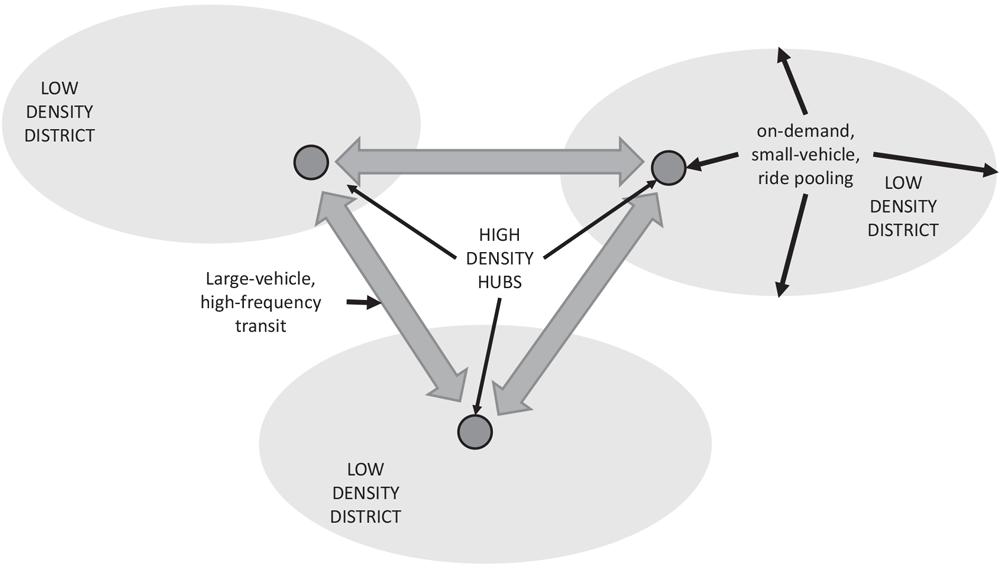Uncovering JAPA
A Simple Path to Sustainable Transportation

The future is shared autonomous vehicles! At least, that is what many believe will improve sustainability in transportation.
But with time before they merge into the existing fleet — and even longer before governments create legislation around them — we are left waiting. Yet with climate and air quality worsening, can we afford to wait?
Instead of these futuristic solutions, perhaps we can achieve more by confronting our systems with the means we have. This is the argument of Louis A. Merlin's "Transportation Sustainability Follows From More People in Fewer Vehicles, Not Necessarily Automation" in the Journal of the American Planning Association (Vol. 85, No. 4).
Integrating Public Transit and TNCs.
Merlin suggests that coordinating between public transit and transportation network companies (TNCs) may reduce traffic congestion, emissions, and gaps in current services. By this, he means promoting pooled rides — multiple riders in one Uber or Lyft car — something already available (at least in pre-pandemic times).
The framework concentrates ridership at high-density stops, where individuals transition between public and private services. Public transit functions to travel between these locations, while TNCs group passengers, taking them from these stops to their final destinations. Merlin cites this would reduce the number of miles traveled without a passenger in a pooled ride, and cut wait times in half while keeping operating costs the same.

Figure 1: Concept diagram for coordination between public transit and a ride-pooling service.
Transformative Potential of Shared Mobility
This approach yields not only increased sustainability but increased equity as well. Today, ride-hailing services primarily are used by individuals younger, more educated, and wealthier than the general population. But by making these services complementary rather than opposing, and by removing technological and financial barriers to use, shared mobility may reduce household dependence on private vehicle ownership.
As Merlin describes it, this is a compelling way to promote sustainability. But even more so, having established coordination within metro areas might renew interest in solving transportation challenges outside them — deploying a mix of public transportation and on-demand services.
Shared autonomous vehicles (SAVs) will be a part of the future of transportation. However to what extent is largely dependent upon how and when manufacturers introduce them as well as how our society addresses threats to dense ridership, such as communicable diseases. Nevertheless, it is the responsibility of planners to discern whether the future benefits of SAVs are enough to stop imagining what might be created in the present.
Top photo: A Lyft ad on light rail in Portland, Oregon. Photo by Flickr user Joe A. Kunzler, AvgeekJoe Productions, growlernoise-AT-gmail-DOT-com (CC BY-NC-ND 2.0).


